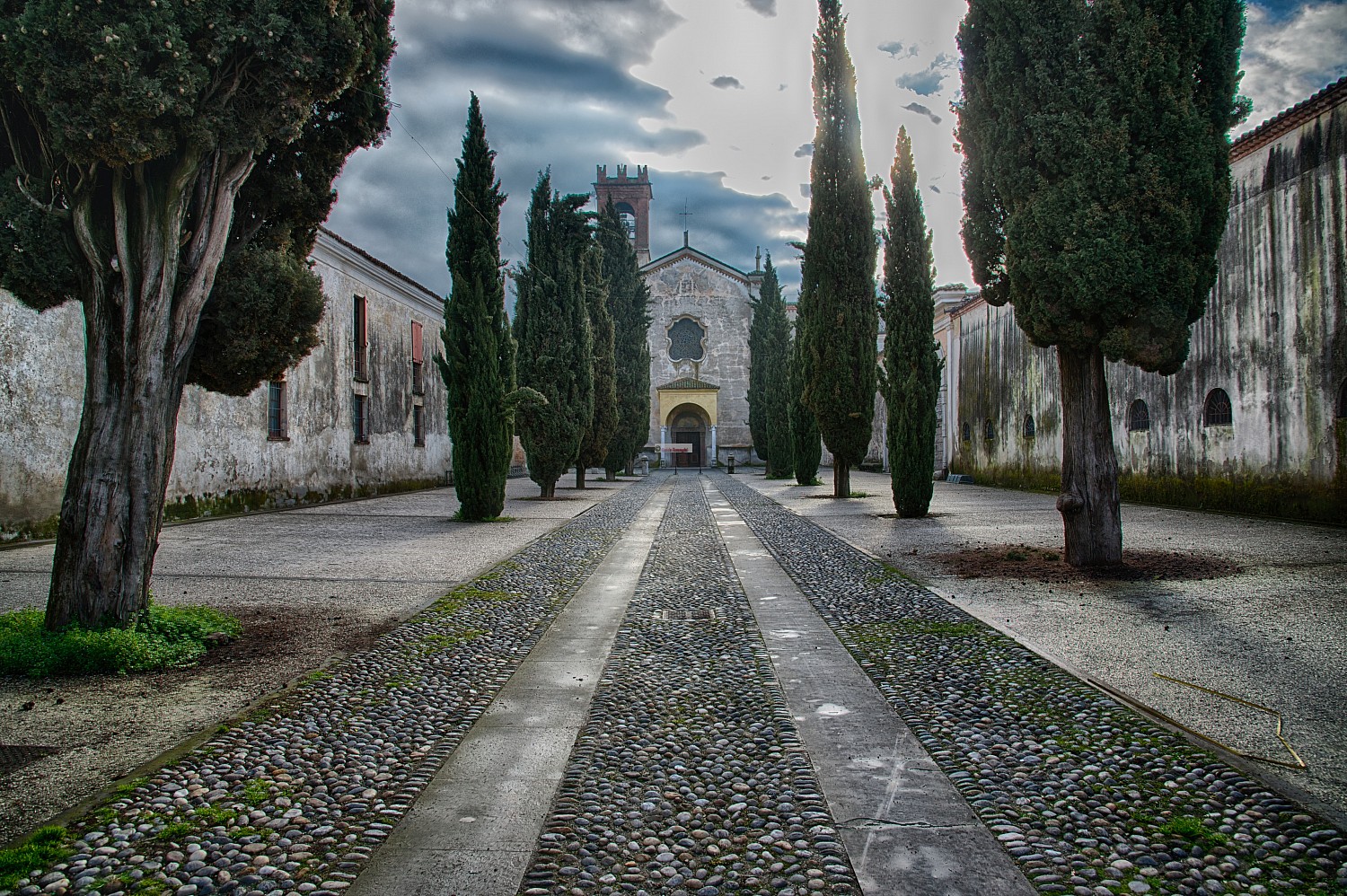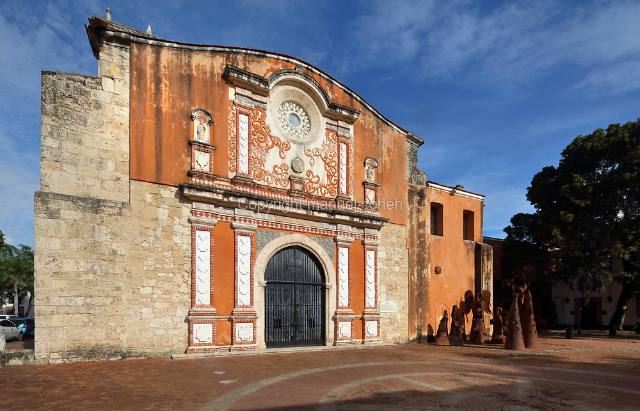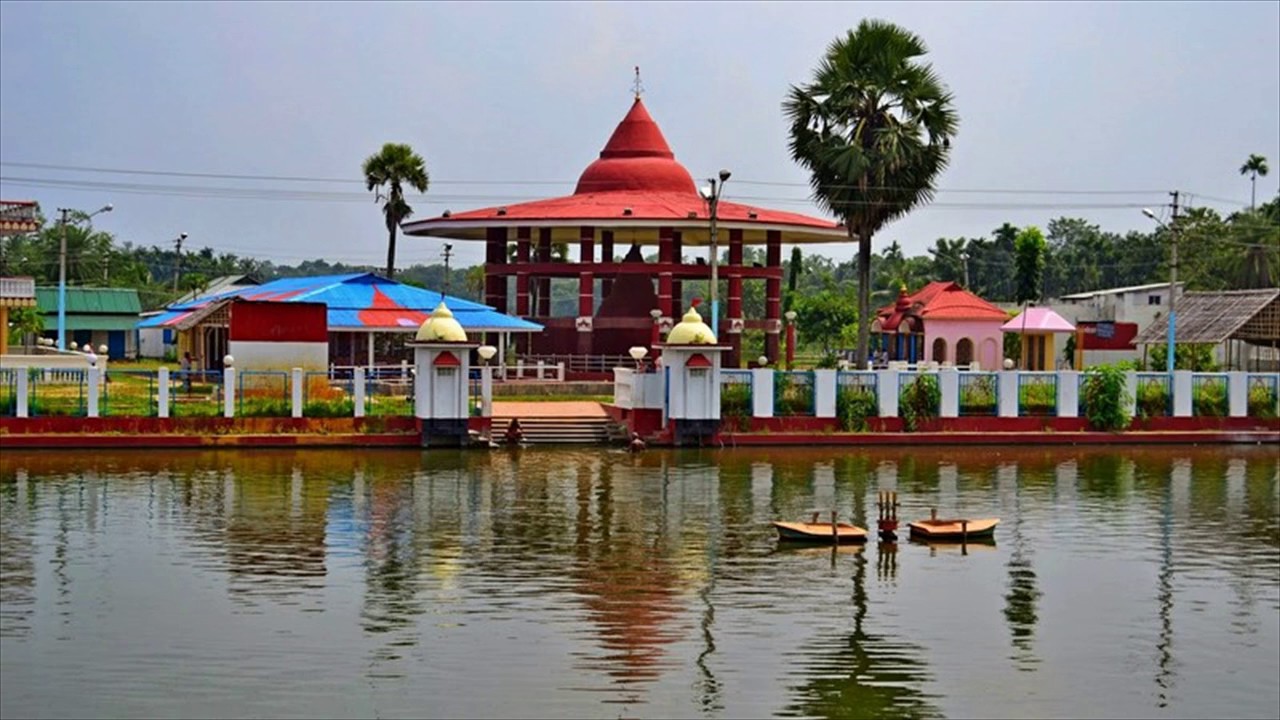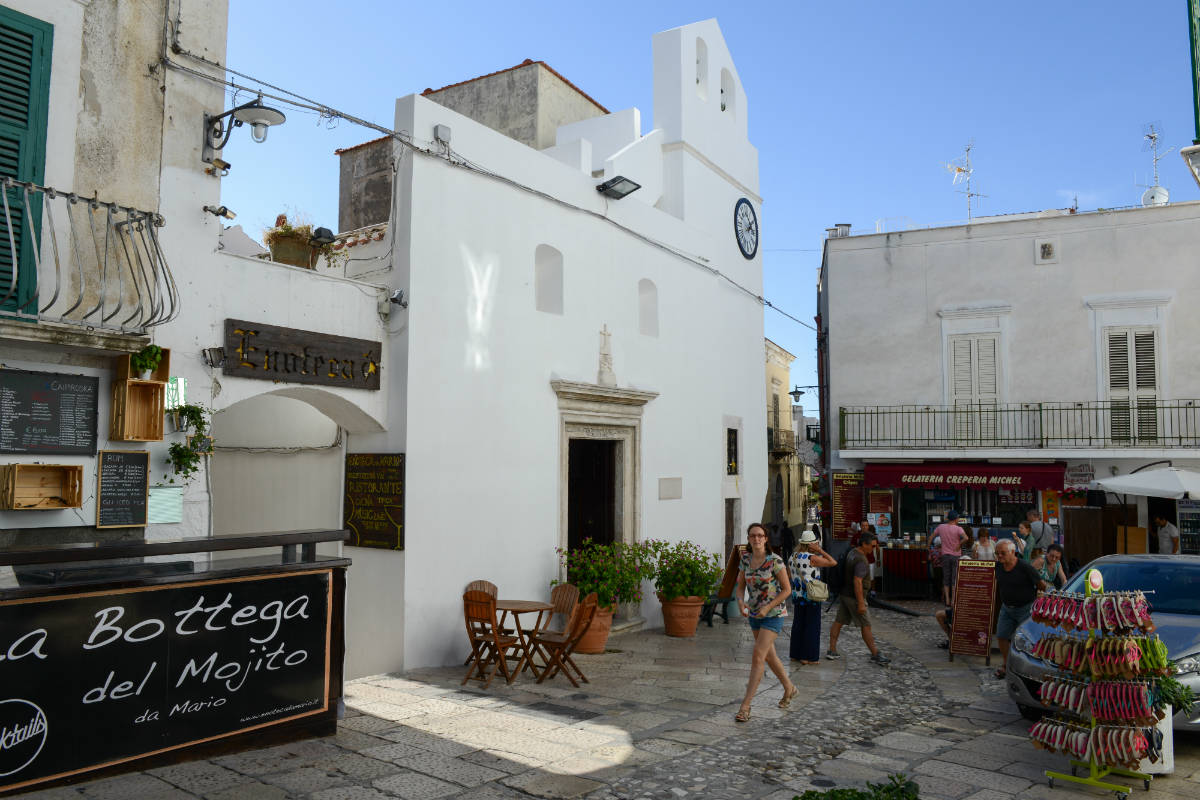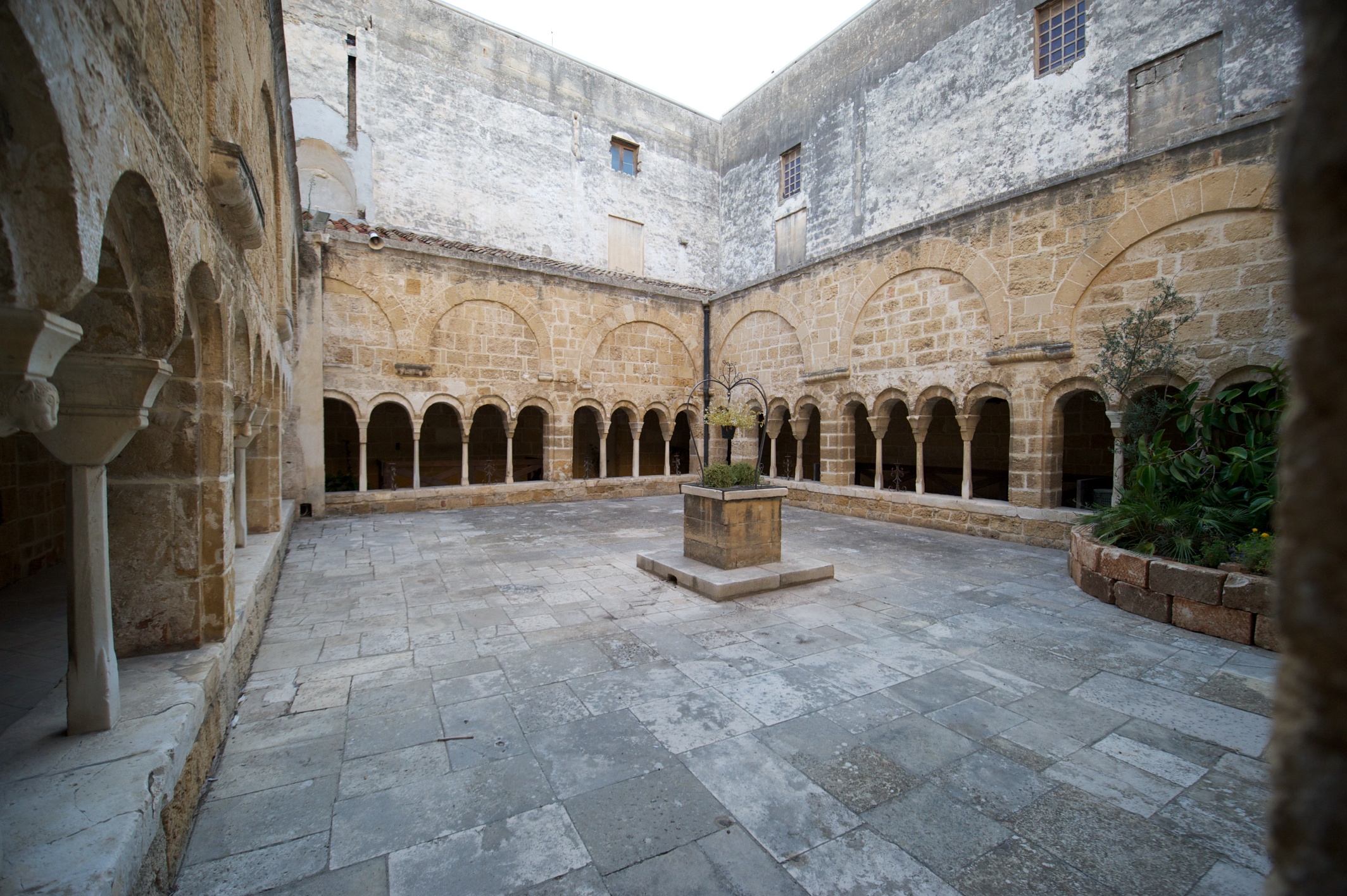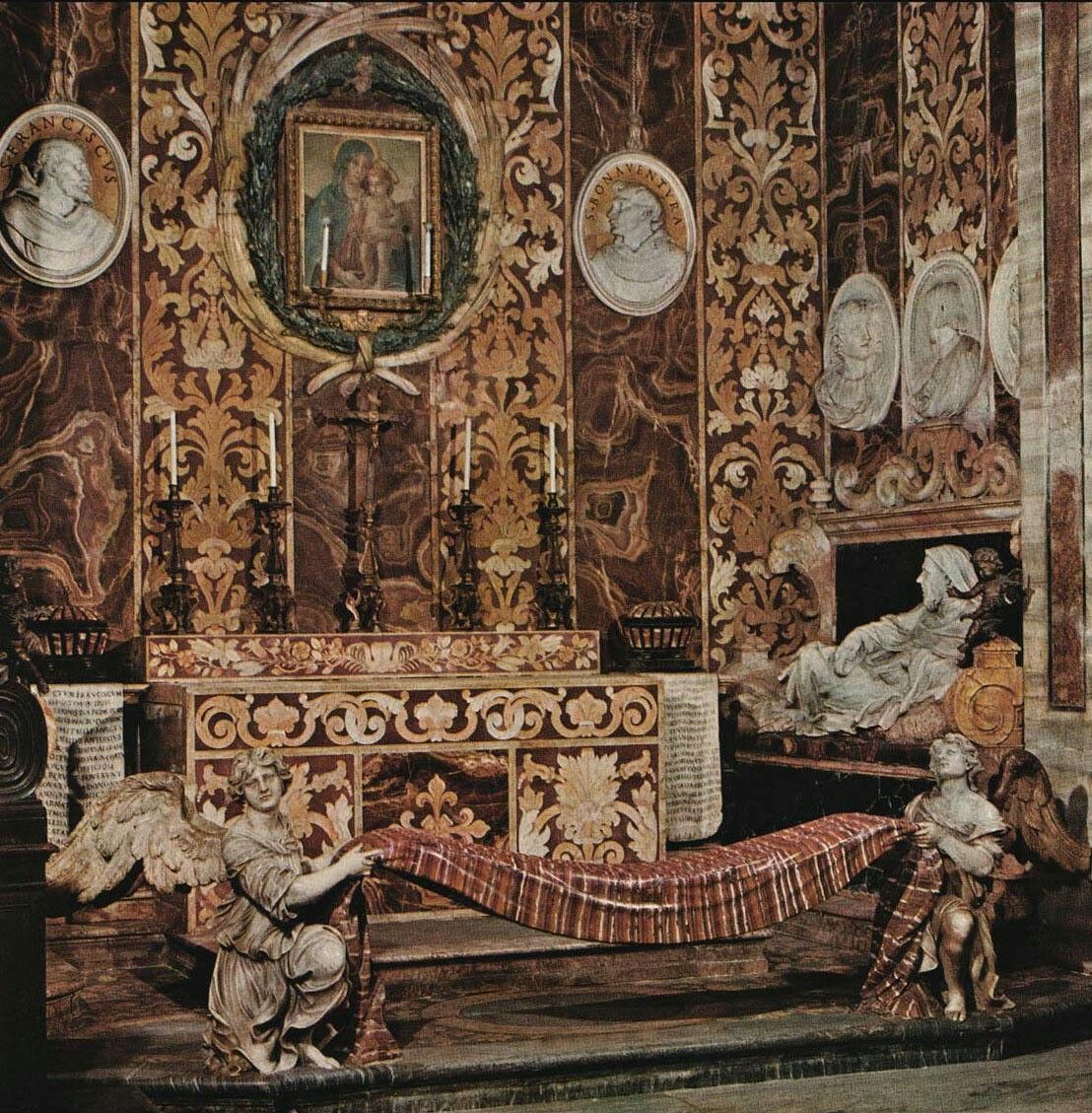Founded by Cluniac monks before 1050 it was located on an important Roman crossroads leading to the city and served as a point of lodging and refreshment for pilgrims traveling to Rome. During a recent archaeological excavation, traces of a Roman wall and remains of a Lombard hut were found in front of the abbey’s churchyard.
In 1446 the primitive abbey was handed over to the Benedictine Olivetan Order of Monte Oliveto Maggiore (Siena), with the aim of consolidating the faith in the area and having a stronger influence in the territory. The monks immediately began the construction of the first two cloisters, the enlargement of the church and at the same time devoted themselves to the reclamation of the surrounding territories, owned by the abbey, establishing very efficient farms of which there remains a vast testimony valuable also from an artistic point of view. Olivetan Abbey of Rodengo SaianoBetween 500 and 600 worked in the monastery, according to the ancient Benedictine customs, the greatest artistic exponents of the Brescian area; we remember the works of Foppa, Romanino, Moretto, Gambara and Cossali, while in later periods worked there the Cremasque painter Barbelli and the painters of the Milanese area Sassi, Castellini and Lecchi of whom many works are visible inside the church. Valuable ceramic (major cloister), wooden (inlaid choir dated 1480 preserved in the church), marble (coats of arms and emblems of the Order) as well as monumental and architectural works make the monastic complex the most significant religious building in the province.
With the advent of Napoleon, the abbey was abandoned and became the site of a farm and began its slow decline. Thanks to the intervention of the Brescian Pope Paul VI, requested by the population both locally and throughout the province, the Olivetan monks returned in 1969 and have since dedicated themselves, with the support of the Brescia Monuments Superintendency and numerous associations, to the recovery of the complex both architecturally and religiously.
The abbey is basically composed of a central body consisting of three cloisters with the church of St. Nicholas along the side of one of them and a series of rustic cottages surrounding the whole complex; in front of the old monumental entrance there is a vast fenced brolo.
In the sacristy one can admire Romanino’s splendid frescoes ("Madonna with Saints Benedict and Nicholas" and "Jesus and the Samaritan Woman at the Well"), while the vault is completely covered with a cycle of 17th-century frescoes and encloses episodes from the life of St. Benedict in eleven lunettes.
Very interesting is the chapter house, with paintings by Pietro da Marone, containing marble tombs of two monks. In the antirefectory are frescoes by Lattanzio Gambara dated 1570 on themes of the Apocalypse and recently restored episodes from the Old Testament.
The refectory was elevated in 1600 so the ancient paintings were lost except for Foppa’s "Crucifixion" preserved on the back wall; 17th-century decorations by T. Sardini and G. Cossali are clearly visible.
Copies of two important "Dinners" by Romanino, whose original frescoes have been transported to the Pinacoteca di Brescia, can be seen in the guest refectory, while well-preserved frescoes by the Brescian painter representing a "Madonna," a unique "Piattiera" and coats of arms of the Order remain.
